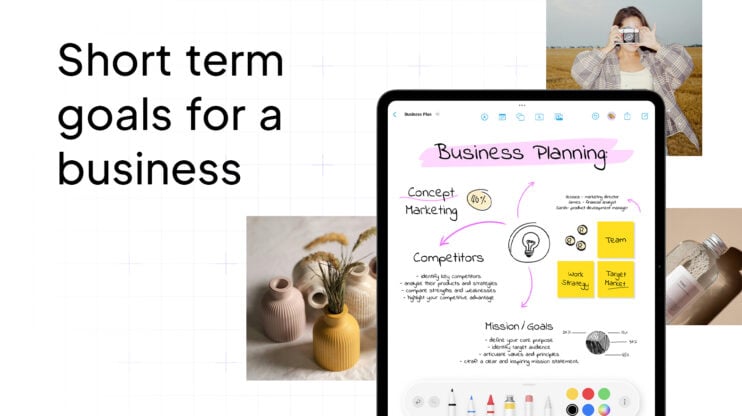Government small business loans can help entrepreneurs get the funding they need to start or grow their businesses. These loans offer a range of options for different business needs and sizes. Many of these loans have the backing of the U.S. Small Business Administration (SBA), which can make it easier for small businesses to get approved.
These loans can be used for various purposes, such as buying equipment, expanding operations, or covering day-to-day costs. Each type of loan has its own terms and requirements.
Understanding the different options is important to find the best fit for your business goals.
FAQ
What is the easiest SBA loan to get approved for?
The easiest SBA loan to get approved for is the SBA Microloan. It offers smaller loan amounts, typically up to $50,000, and has more flexible credit requirements compared to larger SBA loan programs.
What government agency lends money to small businesses?
The U.S. Small Business Administration (SBA) is the primary government agency that provides loans to small businesses. The SBA partners with approved lenders to guarantee a portion of the loan, reducing risk for lenders.
Is PPP money still available?
No, the Paycheck Protection Program (PPP) closed in 2021 and is no longer available. However, other SBA relief programs and traditional loans are still available for small businesses.
What disqualifies you from getting an SBA loan?
Several factors can disqualify you, including poor credit, insufficient collateral, or if your business is involved in prohibited industries like gambling or speculation. Additionally, a history of criminal activity or defaulting on federal loans can also disqualify applicants.
What credit score is needed to get an SBA loan?
While there is no set minimum, most SBA loan programs require a credit score of at least 620–640. However, higher scores (680 and above) improve your chances of approval.
Is the 10K SBA loan a grant?
No, the $10,000 SBA loan was part of the Economic Injury Disaster Loan (EIDL) Advance program, which acted as a grant. The EIDL Advance is no longer available, but other SBA loan programs still exist.
Is the government giving out money to start a business?
The government does not directly give out money to start businesses, but there are loan programs and grants for specific purposes like innovation, research, or disaster recovery.
Do SBA loans come from the government?
The government does not directly issue SBA loans. Instead, they come from approved lenders, with the SBA guaranteeing a portion of the loan to reduce the lender’s risk.

Create your online store in minutes!
Looking to sell online? Develop and launch your store with 10Web AI Ecommerce Website Builder.
Top 11 government small business loans

Government small business loans generally fall into a few key categories: SBA loans, disaster relief loans, and state or local funding programs.
State and local government funding typically supports fostering business growth in specific regions or industries, sometimes with lower interest rates or special incentives.
Loan programs for women

The U.S. Small Business Administration (SBA) offers special loan programs for women entrepreneurs. These programs aim to help women start and grow their businesses.
SBA’s Office of Women’s Business Ownership supports female business owners. They provide training, advice, and access to funding. Women’s Business Centers across the country offer these services.
The SBA 7(a) loan is a popular choice for women-owned businesses. It has low interest rates and long repayment terms. You can use the funds for working capital, supplies, or equipment.
Some online lenders also focus on loans for women. They may have easier qualifying requirements than traditional banks. This can be helpful if you’re just starting out or have less-than-perfect credit.
When looking for a loan, compare offers from different lenders. Check interest rates, fees, and repayment terms. Make sure you understand all the requirements before applying.
| Pros | Cons | Funding Maximum | Eligibility |
|---|---|---|---|
| Low interest rates | Long application process | Up to $5 million | For-profit businesses |
| Long repayment terms | Strict requirements | Varies by program | Good credit score |
| Flexible use of funds | Collateral may be needed | Depends on lender | U.S. citizens or residents |
Disaster assistance loans
The Small Business Administration (SBA) offers disaster assistance loans to help businesses recover from disasters. These loans can also cover operating expenses when employees are called up for military duty.
You can apply for an SBA disaster loan if you’ve been affected by a disaster. First, you need to register with FEMA by phone or online. After getting a FEMA number, you can apply for the SBA loan.
SBA disaster loans have low interest rates and long repayment terms. They can help you repair or replace damaged property. The loans can also cover economic losses from disasters.
To apply, visit the SBA website or call their helpline. SBA staff can assist you at Disaster Recovery Centers, too. The deadline for economic injury loans is often months after the disaster.
These loans aim to help you regain your business after a disaster. They can be a key part of your recovery plan.
| Pros | Cons | Funding Maximum | Eligibility |
|---|---|---|---|
| Low interest rates | Repayment required | Varies by disaster | Disaster-affected businesses |
Microloan program

The SBA’s Microloan program helps small businesses get started and grow. You can borrow up to $50,000 to fund your business needs. The average loan is about $13,000 to $15,000.
These loans are good for many uses. You can buy inventory, supplies, furniture, or equipment. You can also use the money for working capital.
Interest rates vary but typically range from 8% to 13%. You’ll have up to six years to pay back the loan. Fees are usually up to 3% of the loan amount.
The program aims to help underserved communities. In 2022, 76% of microloans went to Hispanic-owned and Black-owned small businesses.
To apply, you’ll work with an SBA-approved lender. They’ll review your business plan and finances. If approved, you’ll get the funds to boost your business.
| Pros | Cons | Funding maximum | Eligibility |
| Low interest rates | Small loan amounts | $50,000 | Small businesses |
| Flexible use of funds | Short repayment terms | Not-for-profit childcare centers |
7(a) loan program
The SBA’s 7(a) loan program helps small businesses get financing. It’s the main business loan program offered by the U.S. Small Business Administration.
You can use 7(a) loans for many business needs. They can cover working capital, equipment purchases, and real estate. The max loan amount is $5 million.
You’ll work with an SBA-approved lender to get a 7(a) loan. They’ll ask for financial documents to check if you can repay the loan.
The SBA guarantees part of these loans. This makes lenders more willing to lend to small businesses.
| Pros | Cons | Funding Maximum | Eligibility |
|---|---|---|---|
| Low interest rates | Lengthy application process | $5 million | For-profit small businesses |
| Flexible use of funds | Strict requirements | Must meet SBA size standards | |
| Long repayment terms | Collateral may be required | Good credit score needed |
The 7(a) program includes different loan types. These fit various business needs and sizes. Some options are Standard 7(a), SBA Express, and Export Express loans.
504 Loan program
The SBA 504 Loan Program helps small businesses get long-term, fixed-rate financing for major assets. These loans can be used to buy land, buildings, or equipment.
You can borrow up to $5 million through this program. In some cases, you might be able to get up to $5.5 million for certain projects.
The 504 loan has a unique structure. You’ll typically put down 10% of the total cost. A bank will cover 50%, and a Certified Development Company (CDC) will finance the remaining 40%.
CDCs are nonprofit groups that work with the SBA. They aim to boost economic growth in their local areas.
| Pros | Cons | Funding Maximum | Eligibility |
| Low down payment | Complex application | $5 million | For-profit businesses |
| Fixed interest rates | Slow approval process | ($5.5 million for select projects) | Net worth under $15 million |
| Long repayment terms | Collateral required | Average net income under $5 million |
One big plus of 504 loans is their fixed interest rates. This means your payments won’t go up if market rates rise. The loans also offer long repayment terms, which can help keep your monthly costs down.
CAPLines program
The CAPLines program is a type of SBA loan that gives small businesses access to short-term working capital. It’s designed to help you manage your cash flow needs.
There are four types of CAPLines:
- Seasonal Line: This helps businesses with seasonal sales cycles.
- Contract Line: For businesses that need funds to complete contracts or projects.
- Builders Line: Aimed at small contractors or developers building or renovating homes.
- Working Capital Line: Provides revolving credit for short-term working capital needs.
You can borrow up to $5 million through the CAPLines program. The funds can be used for inventory, labor, and administrative expenses.
To apply, you’ll need to choose an SBA loan provider. This could be a bank or a broker who specializes in SBA loans. They’ll help you through the application process.
| Pros | Cons | Funding Maximum | Eligibility |
|---|---|---|---|
| Flexible use of funds | Complex application process | $5 million | Must meet SBA size standards |
Export working capital program
The Export Working Capital Program helps small businesses get loans for international sales. You can borrow up to $5 million to fund your export deals. The Small Business Administration runs this program.

Create your online store in minutes!
Looking to sell online? Develop and launch your store with 10Web AI Ecommerce Website Builder.
The loans can cover costs before and after shipping. You might use the money to buy materials, pay workers, or finance customer payments. This gives you more options when talking to overseas buyers about payment terms.
Banks that work with the SBA can approve these loans quickly. The government backs 90% of the loan amount. This makes banks more willing to lend to small exporters.
You can apply for a loan before you have a firm export order. This lets you act fast when you can make a sale abroad. The program aims to help U.S. small businesses compete better in global markets.
| Pros | Cons | Funding maximum | Eligibility |
| Fast approval | Only for exports | $5 million | U.S. small business exporters |
Community advantage program
The Community Advantage program helps small businesses get loans. It’s part of the SBA’s 7(a) loan program. This program aims to help businesses in underserved areas.
Community Advantage loans can be used for many things. You can use them to buy equipment, get working capital, or expand your business. These loans often have better terms than regular bank loans.
The program works with special lenders. These lenders focus on helping small businesses in their communities. They can give loans up to $350,000.
To qualify, your business must be small. You also need to be in an underserved area or group. This could mean low-income areas or businesses owned by minorities or women.
The program was set to end, but it has been extended. This gives more small businesses a chance to get funding. If you’re interested, talk to a local SBA lender to learn more.
| Pros | Cons | Funding Maximum | Eligibility |
|---|---|---|---|
| Better loan terms | Limited lenders | $350,000 | Small businesses in underserved areas |
Veterans Advantage loan

The Veterans Advantage loan is a special program for veteran-owned businesses. It’s part of the Small Business Administration’s 7(a) loan program. This loan offers reduced fees compared to standard 7(a) loans.
You can borrow up to $5 million with a Veterans Advantage loan. The exact amount depends on your business needs and financial situation. Your credit score also plays a role in determining how much you can borrow.
To qualify, your business must be at least 51% owned by veterans, active-duty military members, or certain spouses. The loan can be used for various business purposes. This includes buying equipment, getting working capital, or refinancing debt.
| Pros | Cons | Funding maximum | Eligibility |
| Reduced fees | Strict eligibility rules | $5 million | 51%+ veteran-owned |
| Flexible use of funds | Credit score affects amount | Active-duty or spouse |
SBA Express loan
SBA Express loans are a fast-track option for small business funding. They’re part of the SBA 7(a) loan program but have a quicker approval process. You can get up to $500,000 for your business needs.
These loans are great for working capital, buying equipment, or expanding your business. The SBA guarantees 50% of the loan amount, which helps lenders feel more secure about approving you.

Create your online store in minutes!
Looking to sell online? Develop and launch your store with 10Web AI Ecommerce Website Builder.
You can choose between a term loan or a line of credit. Term loans last up to 10 years, while lines of credit are good for 7 years. If you’re using the money for real estate, you might get up to 25 years to pay it back.
Interest rates on SBA Express loans vary. Depending on your credit and the lender’s terms, they can range from 11.50% to 16.50%.
To apply, you’ll need to find an SBA-approved lender. They’ll guide you through the process and help you gather the needed documents. The SBA aims to respond to applications within 36 hours, making this a speedy option for your business funding needs.
| Pros | Cons | Funding Maximum | Eligibility |
|---|---|---|---|
| Fast approval process | Higher interest rates | $500,000 | Small businesses |
| Flexible use of funds | Smaller loan amounts | Good credit score | |
| Term loans and lines of credit | 50% SBA guarantee | For-profit business |
Small business investment company (SBIC) program
The SBIC program helps small businesses get money to grow. It’s run by the U.S. Small Business Administration (SBA). SBICs are private investment funds that give loans and equity to small companies.
SBICs use their own money plus funds from the SBA. This lets them invest more in small businesses. They focus on companies that have trouble getting regular bank loans.
To qualify, your business must be small by SBA standards. This usually means having a net worth under $24 million and an average net income below $8 million for the past two years.
SBICs can provide different types of funding. You might get a loan, or they could buy part of your company. The amount can vary based on your needs and the SBIC’s rules.
One good thing about SBICs is they offer patient capital. This means longer-term funding that gives your business time to grow. They also bring expertise to help guide your company.
| Pros | Cons | Funding Maximum | Eligibility |
|---|---|---|---|
| Long-term capital | May require giving up equity | Varies by SBIC | Net worth under $24M |
| Expert guidance | Competitive application process | Average net income under $8M |
Understanding government small business loans
Government small business loans can help you get funding for your business. These loans offer lower interest rates and longer repayment terms than many other options.
Purpose and benefits
Government small business loans aim to help you start or grow your business. You can use them for things like buying equipment or getting more working capital. These loans often have better terms than regular bank loans.
The Small Business Administration (SBA) backs many of these loans. This means the SBA will pay back part of the loan if you can’t do so. Because of this, lenders are more willing to give you money.
SBA loans can range from $500 to $5.5 million. You might get up to 25 years to repay a real estate loan. For working capital, you could have 5 to 10 years.
Eligibility requirements
To get a government small business loan, you need to meet certain rules. Your business must be for-profit and operate in the U.S. You also need to have tried other funding options first.
The SBA looks at a few things when deciding if you can get a loan:
- Your credit score
- Your business plan
- How much money you need
- What you’ll use the money for
Different SBA loan types have their own rules. For example, SBA microloans are for smaller amounts, up to $50,000. These can be good if you’re just starting out.
| Pros | Cons | Funding Maximum | Eligibility |
|---|---|---|---|
| Lower interest rates | Strict requirements | Up to $5.5 million | For-profit business |
| Longer repayment terms | Long application process | Good credit score | |
| SBA guarantee | Solid business plan |
Choosing the right funding option
You have several options to consider when looking for a small business loan. Each type of lender offers different benefits and drawbacks.
Banks and credit unions often provide the most affordable loans. They typically have lower interest rates and longer repayment terms. But their requirements can be strict. You’ll likely need good credit, strong financials, and at least two years in business to qualify.

Create your online store in minutes!
Looking to sell online? Develop and launch your store with 10Web AI Ecommerce Website Builder.
Online lenders offer faster funding and more flexible requirements. Some can approve loans in just a few days. Their rates tend to be higher than banks, though. Make sure to compare the total cost of borrowing.
Government small business loans are another choice. These are backed by the government but issued by banks. They have competitive rates and long terms. The application process can take time, but the terms are often favorable for small businesses.
Here are some top lenders to consider:
Bank of America
| Pros | Cons | Max Funding | Eligibility |
|---|---|---|---|
| No origination fees on some loans Builds business credit Secured and unsecured options |
Slow funding Strict requirements |
Varies by product | Good credit, 2+ years in business |
Bank of America offers a range of business loans and lines of credit. They have both secured and unsecured options. Some loans have no origination fees. Payments are reported to credit bureaus to help build your business credit.
We like their variety of products and the lack of fees on some loans. The downsides are the slow funding process and strict eligibility rules. Bank of America is a good choice if you have strong financials and don’t need fast funding.
This lender works well for established businesses with good credit who are looking for affordable rates.
Bluevine
| Pros | Cons | Max Funding | Eligibility |
|---|---|---|---|
| Fast funding No origination fees No collateral required |
Higher rates than banks Short repayment terms |
$250,000 | 2+ years in business, $10,000+ monthly revenue |
Bluevine provides business lines of credit up to $250,000. They offer fast funding, often within a few days. No origination fees or collateral are required.
We like Bluevine’s speed and lack of extra fees. The drawbacks are higher rates compared to banks and shorter repayment terms. Bluevine stands out for its quick and easy application process.
This lender is best for businesses that need fast access to working capital and can manage higher rates.
OnDeck
| Pros | Cons | Max Funding | Eligibility |
|---|---|---|---|
| Same-day funding possible Lower requirements than banks Term loans and lines of credit |
Higher rates Frequent payments |
$250,000 | 1+ year in business, $100,000+ annual revenue |
OnDeck offers term loans and lines of credit up to $250,000. They can fund loans very quickly, sometimes the same day. Their requirements are lower than most banks.
We appreciate OnDeck’s fast funding and more flexible criteria. The downsides are higher rates and more frequent payment schedules. OnDeck is a top pick for speed and accessibility.
This lender fits well for newer businesses or those with less-than-perfect credit who need quick funding.
Application process for government small business loans
Getting a government small business loan involves paperwork and steps. You’ll need to gather documents and follow a specific process to apply.
Preparing necessary documents
To apply for a government small business loan, you’ll need several key documents:
- Business plan
- Financial statements
- Tax returns
- Bank statements
- Legal documents (licenses, leases, contracts)
- Personal financial information
Make sure these documents are up-to-date and accurate. The lender will use them to assess your loan application.
Step-by-step application guide
- Choose a loan program that fits your needs
- Find an SBA-approved lender
- Fill out the loan application form
- Submit your prepared documents
- Wait for the lender to review your application
- Respond to any requests for more information
- If approved, review and sign loan documents
- Receive funds and start using them for your business
The process can take a few weeks to a few months.
Be patient and stay in touch with your lender.
| Pros | Cons | Funding maximum | Eligibility |
|---|---|---|---|
| Lower interest rates | Lengthy application process | Up to $5.5 million | For-profit small businesses |
| Longer repayment terms | Strict requirements | Good credit score | |
| Flexible use of funds | Collateral may be needed | U.S.-based business |

Create your online store in minutes!
Looking to sell online? Develop and launch your store with 10Web AI Ecommerce Website Builder.
Conclusion
Government small business loans offer crucial support for entrepreneurs and small companies. These programs provide access to capital that might otherwise be hard to get.
You have many options to explore, from SBA loans to disaster assistance.
Key benefits of government small business loans:
- Lower interest rates
- Longer repayment terms
- Less strict credit requirements
Some challenges to keep in mind:
- Paperwork can be time-consuming
- The approval process may take weeks or months
- Funding amounts may be limited
The SBA and other agencies work to improve these programs. Recent changes aim to expand access and streamline processes. This is good news if you’re looking to start or grow your business.
Don’t feel discouraged if getting a loan seems hard. Many resources exist to help you through the process. Local SBA offices, Small Business Development Centers, and mentorship programs can guide you.
Remember, persistence pays off. Take time to research your options and prepare a strong application. With the right approach, you can find funding to support your small business goals.










